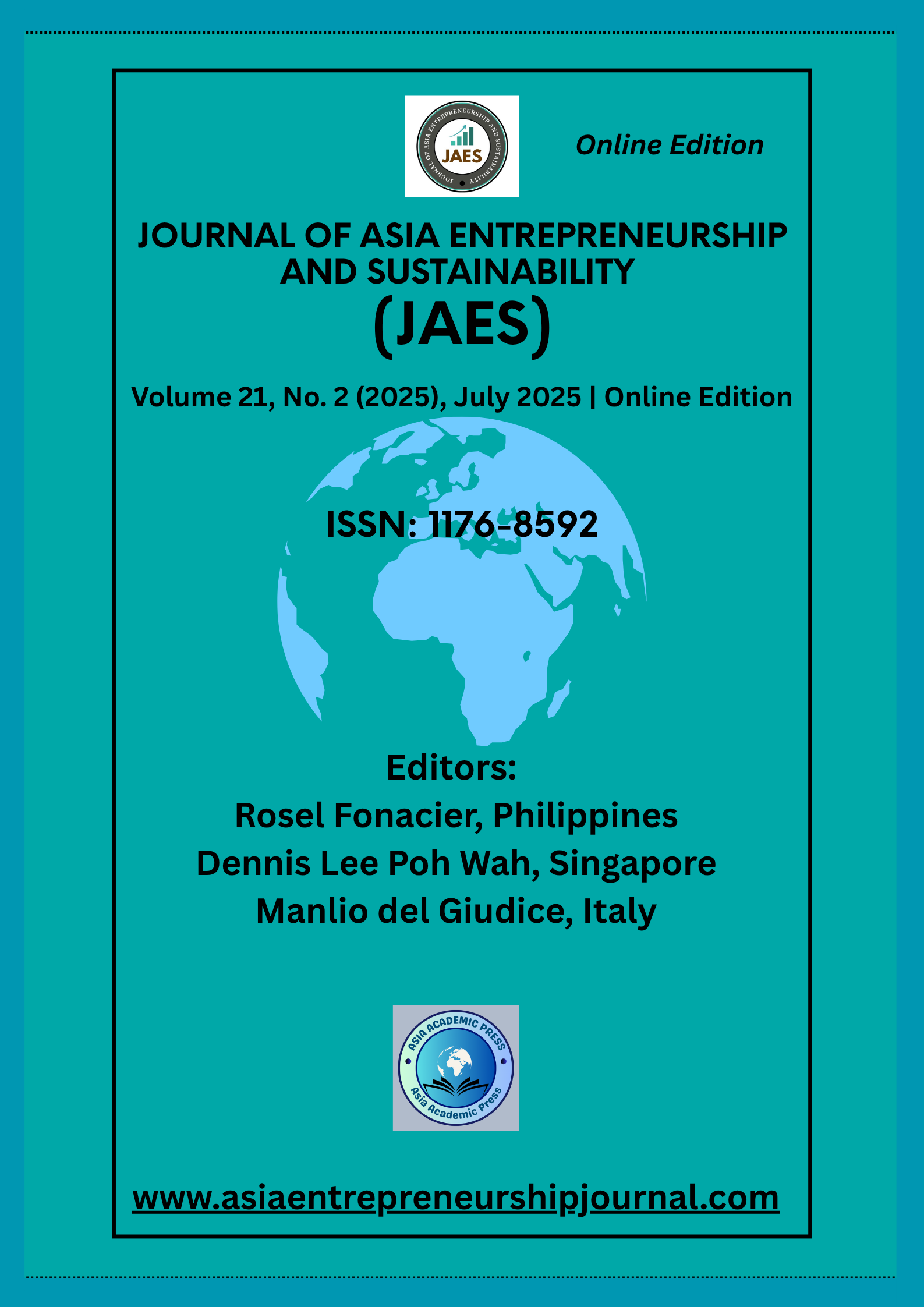The Impact of Social Media Influencers on Consumer Purchase Decisions in India
DOI:
https://doi.org/10.53555/jaes.v21i2.16Keywords:
Social media influencers, consumer behaviour, purchase intention, influencer marketing, parasocial interaction, digital trust, Instagram, YouTube, India.Abstract
In recent years, social media influencers have emerged as powerful agents of digital marketing, reshaping how consumers discover, evaluate, and purchase products. This study investigates the extent to which influencer attributes—such as credibility, parasocial interaction, and content exposure—affect consumer purchase intentions. Drawing on a sample of 300 social media users in India, quantitative methods including correlation analysis and hypothesis testing were employed using SPSS to assess the relationships between influencer engagement and consumer behaviour. Contrary to widely held assumptions, the findings reveal that influencer credibility does not significantly enhance purchase intention, and parasocial interaction may even correlate negatively with brand perception. Moreover, content exposure frequency and platform type (Instagram vs. YouTube) were not found to be decisive factors in influencing consumer decisions. The results suggest that while influencers remain relevant as digital intermediaries, their effectiveness in driving consumer purchases is limited and mediated by deeper trust, content relevance, and contextual factors. The paper offers practical recommendations for marketers to recalibrate influencer strategies toward authenticity, integrated messaging, and audience alignment.
References
1. Abidin, C. (2016). “Aren’t these just young, rich women doing vain things online?”: Influencer selfies as subversive frivolity. Social Media + Society, 2(2), 1–17. https://doi.org/10.1177/2056305116641342
2. Ajzen, I. (1991). The theory of planned behavior. Organizational Behavior and Human Decision Processes, 50(2), 179–211. https://doi.org/10.1016/0749-5978(91)90020-T
3. Boerman, S. C., Willemsen, L. M., & Van Der Aa, E. P. (2017). "This post is sponsored": Effects of sponsorship disclosure on persuasion knowledge and electronic word of mouth in the context of Facebook. Journal of Interactive Marketing, 38, 82–92. https://doi.org/10.1016/j.intmar.2016.12.002
4. Breves, P. L., Liebers, N., Abt, M., & Kunze, A. (2019). The perceived fit between Instagram influencers and the endorsed brand: How influencer–brand fit affects source credibility and persuasive effectiveness. Journal of Advertising Research, 59(4), 440–454. https://doi.org/10.2501/JAR-2019-030
5. Casaló, L. V., Flavián, C., & Ibáñez-Sánchez, S. (2018). Influencers on Instagram: Antecedents and consequences of opinion leadership. Journal of Business Research, 117, 510–519.
https://doi.org/10.1016/j.jbusres.2018.07.005
6. Cheung, C. M., & Thadani, D. R. (2012). The impact of electronic word-of-mouth communication: A literature analysis and integrative model. Decision Support Systems, 54(1), 461–470.
https://doi.org/10.1016/j.dss.2012.06.008
7. De Veirman, M., Cauberghe, V., & Hudders, L. (2017). Marketing through Instagram influencers: Impact of number of followers and product divergence on brand attitude. International Journal of Advertising, 36(5), 798–828. https://doi.org/10.1080/02650487.2017.1348035
8. Djafarova, E., & Rushworth, C. (2017). Exploring the credibility of online celebrities’ Instagram profiles in influencing the purchase decisions of young female users. Computers in Human Behavior, 68, 1–7. https://doi.org/10.1016/j.chb.2016.11.009
9. Erdogan, B. Z. (1999). Celebrity endorsement: A literature review. Journal of Marketing Management, 15(4), 291–314. https://doi.org/10.1362/026725799784870379
10. EY–IFICI. (2022). The India Influencer Marketing Report 2022. Ernst & Young & Indian Federation of Influencer and Content Creators. https://www.ey.com/en_in
11. Freberg, K., Graham, K., McGaughey, K., & Freberg, L. A. (2011). Who are the social media influencers? A study of public perceptions of personality. Public Relations Review, 37(1), 90–92.
https://doi.org/10.1016/j.pubrev.2010.11.001
12. Hovland, C. I., Janis, I. L., & Kelley, H. H. (1953). Communication and persuasion: Psychological studies of opinion change. Yale University Press.
13. Hwang, K., & Zhang, Q. (2018). Influence of parasocial relationship between digital celebrities and their followers on followers’ purchase and electronic word-of-mouth intentions, and persuasion knowledge. Computers in Human Behavior, 87, 155–173. https://doi.org/10.1016/j.chb.2018.05.029
14. Jin, S. V., & Ryu, E. (2020). “I'll buy what she's #wearing”: The roles of envy toward and parasocial interaction with influencers in Instagram celebrity-based brand endorsement and social commerce. Journal of Retailing and Consumer Services, 55, 102121. https://doi.org/10.1016/j.jretconser.2020.102121
15. Kapitan, S., & Silvera, D. H. (2016). From digital media influencers to celebrity endorsers: Attributions drive endorser effectiveness. Marketing Letters, 27(3), 553–567. https://doi.org/10.1007/s11002-015-9363-0
16. Ki, C.-W., & Kim, Y.-K. (2019). The mechanism by which social media influencers persuade consumers: The role of consumers’ desire to mimic. Psychology & Marketing, 36(10), 905–922. https://doi.org/10.1002/mar.21244
17. Lim, X. J., Radzol, A. M., Cheah, J.-H., & Wong, M. W. (2017). The impact of social media influencers on purchase intention and the mediation effect of customer attitude. Asian Journal of Business Research, 7(2), 19–36. https://doi.org/10.14707/ajbr.170035
18. Lou, C., & Yuan, S. (2019). Influencer marketing: How message value and credibility affect consumer trust of branded content on social media. Journal of Interactive Advertising, 19(1), 58–73.
https://doi.org/10.1080/15252019.2018.1533501
19. Lou, C., Tan, S. S., & Chen, X. (2019). Investigating consumer engagement with influencer- vs. brand-promoted ads: The roles of source and disclosure. Journal of Interactive Advertising, 19(3), 169–186.
https://doi.org/10.1080/15252019.2019.1667928
20. Ohanian, R. (1990). Construction and validation of a scale to measure celebrity endorsers’ perceived expertise, trustworthiness, and attractiveness. Journal of Advertising, 19(3), 39–52.
https://doi.org/10.1080/00913367.1990.10673191
21. Pavlou, P. A., & Stewart, D. W. (2000). Measuring the effects and effectiveness of interactive advertising: A research agenda. Journal of Interactive Advertising, 1(1), 61–77.
https://doi.org/10.1080/15252019.2000.10722044
22. Schouten, A. P., Janssen, L., & Verspaget, M. (2020). Celebrity vs. influencer endorsements in advertising: The role of identification, credibility, and product-endorser fit. International Journal of Advertising, 39(2), 258–281. https://doi.org/10.1080/02650487.2019.1634898
23. Scott, D. M. (2015). The new rules of marketing and PR: How to use social media, online video, mobile applications, blogs, news releases, and viral marketing to reach buyers directly (5th ed.). Wiley.
24. Singh, S., & Sonnenburg, S. (2020). Brand performances in social media. Journal of Business Research, 103, 507–516.
25. Sokolova, K., & Kefi, H. (2020). Instagram and YouTube bloggers promote it, why should I buy? How credibility and parasocial interaction influence purchase intentions. Journal of Retailing and Consumer Services, 53, 101742. https://doi.org/10.1016/j.jretconser.2019.01.011









